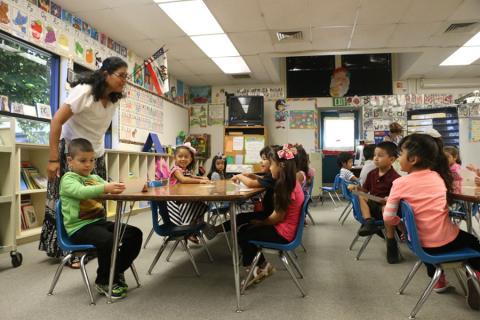<p></p>
<p>A $15 billion bond measure to modernize schools throughout the state failed to pass in Tuesday’s election, as did bond measures in Poway, Lakeside, Escondido, Chula Vista, and East County.</p>
<p>The statewide measure, called Proposition 13, would have approved issuing up to $15 billion in new bonds to providing matching funds to local districts to modernize schools and upgrade equipment. The proposition had the same number, 13, as the well-known 1978 measure that limited property tax increases in the state.</p>
<p>The $15 billion would have been used to remove hazardous materials like asbestos and lead from schools, as well as modernization of K-12 schools, charters schools, and technical schools, and nearly $6 billion for community colleges, the California State University system, and the University of California system.</p>
<p>Proponents of the measure, including teachers unions and Governor Gavin Newsom, argued that 70% of schools in the State are over 25 years old, and that historically-low interest rates made it a good time to borrow the much-needed money.</p>
<p>The major opposition to the new Prop 13 came from the Howard Jarvis Taxpayers Association, a taxpayer advocacy group named after the man that spearheaded the passage of 1978’s Prop 13. The group’s President argued that they opposed the measure because, in addition to approving statewide bonds, it would have increased the amount of debt local district can incur themselves, which could lead to higher property taxes for homeowners in local districts. Prop 13 would have nearly doubled the limit that local school districts can borrow, from 1.25% to 2% of the assessed property values of the homes within its district.</p>
<p>“Local school bonds come with a tax increase, unlike statewide bonds,” Jon Coupal said. “Why are we talking about going further into debt?”</p>
<p>The statewide bonds would have been paid for by an annual allocation in the state’s budget. Local school bonds, on the other hand, are paid for by imposing additional property tax assessments on each home within a school district.</p>
<p>In San Diego County, voters rejected school district bonds in five local districts, including Cajon Valley’s $220 million bond, Chula Vista’s $300 million bond, Escondido’s $205 million bond, Lakeside’s $33 million bond, and Poway’s $440 million bond.</p>
<p>But voters in the San Ysidro School District approved two bond measures that totaled more than $108 million.</p>
<p>Measures U and T asked San Ysidro voters to approve bonds for classroom and facility improvements, with total assessments of up to $30.00 per $100,000 of assessed value on homes within the District. A typical home in the District could see a property tax increase of up to $150 per year for up to 40 years. In total, the future costs to taxpayers for the bonds and interest could reach over $201,000,000.</p>
<p>Unlike the other school districts, San Ysidro School District is currently in “qualified certification” with the County Office of Education, meaning the District is at risk of being insolvent this year or in the next two years. The San Ysidro District is operating using deficit spending and is currently below the required minimum standards for budget reserves. The District has had its bond rating lowered in recent years due to its on-going financial troubles, resulting in higher than average interest costs when it issues bonds.</p>
<p>A report by San Diego’s in 2015 found that local school districts already carry high levels of bond debt, and, therefore, higher property tax assessments.</p>
<p>In San Diego County, the highest rates paid by taxpayers were in Rancho Santa Fe school district, at $651.60 per year, and in the San Ysidro School District and Sweetwater High School District, where homeowners pay $568.07 per year. These school bond assessments are on top of the homeowners’ annual property taxes. When these new bonds are issued, homeowners in San Ysidro will pay the highest total school bond assessments in San Diego County.</p>
<p>This election’s Prop 13 was placed on the ballot by a bill passes by the Legislature and signed by Governor Newsom, and each of the district bond measures were approved and placed on the ballot by each district’s school board.</p>
Image
Image

Category